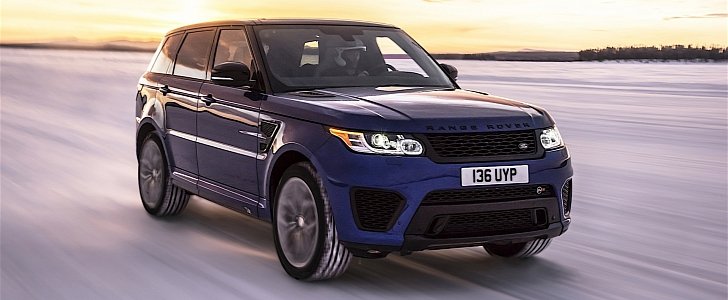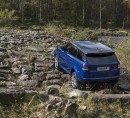SUVs, even those that are promoted as performance models, only get the standard acceleration tests and figures when they are revealed.
Land Rover decided to think out of the box, and the Brits put themselves in place of journalists by doing timed acceleration runs on the Range Rover Sport SVR. Instead of just doing them on asphalt and confirming the brand’s stated results, they went “above and beyond” to see just how quick can this performance model be on low-grip surfaces.
All tests were carried with a professional driver behind the wheel, and the car was fitted with the same Michelin All Season tires, which are standard for the Range Rover Sport SVR in the 275/45 R21 dimensions.
Range Rover is the first manufacturer that performs this acceleration test and announces its results, and we hope this becomes a trend for the SUV segment.
The Land Rover Terrain Response 2 system was set to the corresponding condition every time the driving surface changed. It has six settings, but only four were used, because the other two were for “General Driving,” and “Rock Crawl.”
The driver can switch between them using a knob that is placed on the center console, and this modifies the way that the wheels receive torque from the supercharged V8 engine.
On asphalt, the car only required 4.7 seconds to sprint from still to 100 km/h (62 mph). The time increased by 0.6 seconds for Gravel. Doing the same acceleration run on wet grass led to another 0.2 seconds on top of the previous result.
If the SUV has to accelerate on Mud, with the “Mud and Ruts” mode activated, it needs an extra second from the time it has accomplished on wet grass. However, an acceleration on sand, using the dedicated mode for this surface, achieved the same result as on wet grass using the “Grass, Gravel, and Snow” setting. The slowest acceleration time, 11.3 seconds from 0 to 100 km/h (62 mph), was achieved on snow.
All tests were carried with a professional driver behind the wheel, and the car was fitted with the same Michelin All Season tires, which are standard for the Range Rover Sport SVR in the 275/45 R21 dimensions.
Range Rover is the first manufacturer that performs this acceleration test and announces its results, and we hope this becomes a trend for the SUV segment.
The Land Rover Terrain Response 2 system was set to the corresponding condition every time the driving surface changed. It has six settings, but only four were used, because the other two were for “General Driving,” and “Rock Crawl.”
The driver can switch between them using a knob that is placed on the center console, and this modifies the way that the wheels receive torque from the supercharged V8 engine.
On asphalt, the car only required 4.7 seconds to sprint from still to 100 km/h (62 mph). The time increased by 0.6 seconds for Gravel. Doing the same acceleration run on wet grass led to another 0.2 seconds on top of the previous result.
If the SUV has to accelerate on Mud, with the “Mud and Ruts” mode activated, it needs an extra second from the time it has accomplished on wet grass. However, an acceleration on sand, using the dedicated mode for this surface, achieved the same result as on wet grass using the “Grass, Gravel, and Snow” setting. The slowest acceleration time, 11.3 seconds from 0 to 100 km/h (62 mph), was achieved on snow.





























